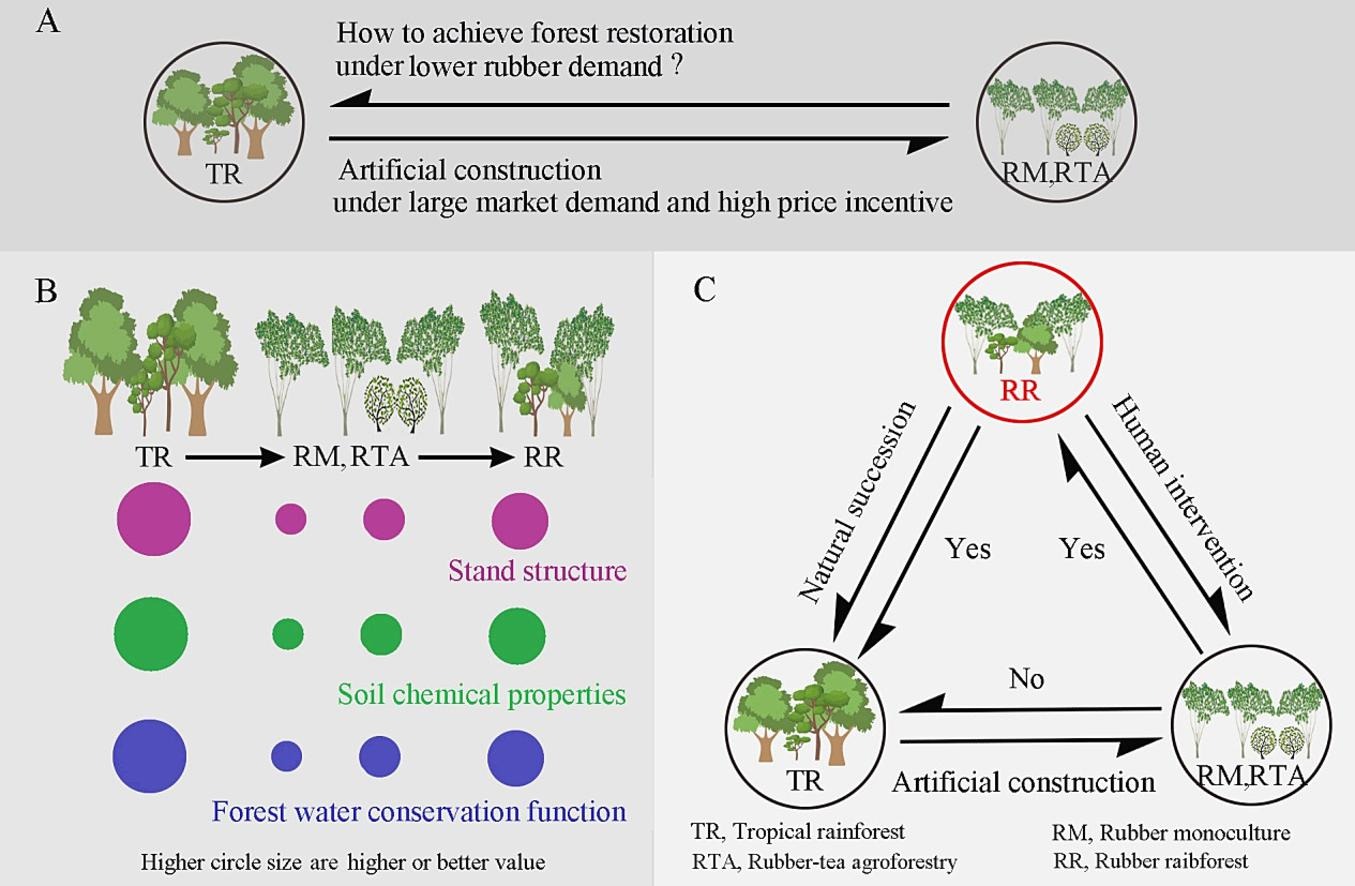The deterioration of soil and water resources resulting from tropical rainforest (TR) conversion to monoculture plantations (e.g., rubber monoculture; RM) could be restrained and restored through intercropping. However, there have been few studies that provide useful guidance on how to restore RM or mixed rubber plantations to rubber rainforest (RR: derived from the invasion of wild native plants in abandoned RM).
In a study published in Geoderma, researchers from Xishuangbanna Tropical Botanical Garden (XTBG) investigated the variations in soil properties and forest water conservation function during the forest conversion (from tropical rainforest to rubber monoculture, rubber monoculture to rubber-tea agroforestry, rubber-tea agroforestry to rubber rainforest, and rubber rainforest retransformation into tropical rainforest) in the humid tropical region of Xishuangbanna, China.
The researchers found that the soil’s physical and chemical properties were interdepended, and many of those interrelationships were mediated by water flow behaviors. The soil physical and chemical properties followed the decreasing order of tropical rainforest > rubber rainforest > rubber-tea agroforestry > rubber monoculture.
“Therefore, degraded soil under rubber monoculture converted from tropical rainforest could be restored greatly by converting them into rubber rainforest and then to a climax stage of tropical rainforest after several years of natural succession,” said JIANG Xiaojin of XTBG.
They further found that the water supply capacity declined in the following order throughout the year: tropical rainforest > rubber rainforest > rubber-tea agroforestry > rubber monoculture. As a result, water stress occurred in rubber monoculture but was alleviated in rubber-tea agroforestry and rubber rainforest.
Therefore, when converting forests, the potential effects of water flow behaviors on soil properties and forest water conservation function should be taken into account.
"Our study highlights that the rubber rainforest appeared as a transitional stage during the course of forest restoration from rubber monoculture to tropical rainforest under low rubber demand,” said CHEN Chunfeng of XTBG.
Contact
JIANG Xiaojin Ph.D
Key Laboratory of Tropical Forest Ecology, Xishuangbanna Tropical Botanical Garden, Chinese Academy of Sciences, Mengla, Yunnan 666303, China
E-mail:jiangxiaojin@xtbg.ac.cn
First Published: 11 November 2023

Achieving forest restoation under lower rubber demand. (Image by JIANG Xiaojin)

